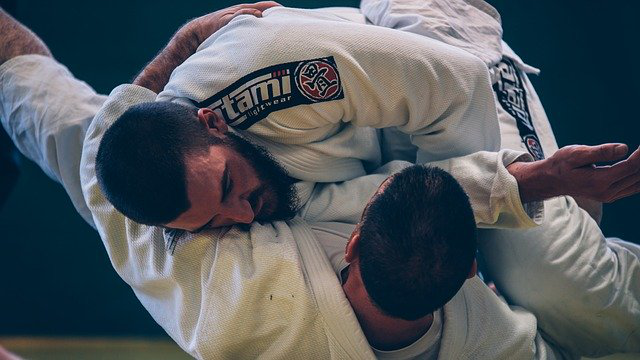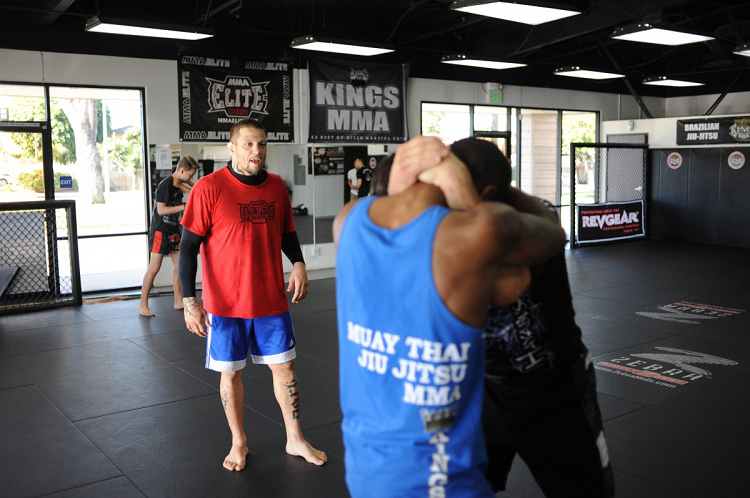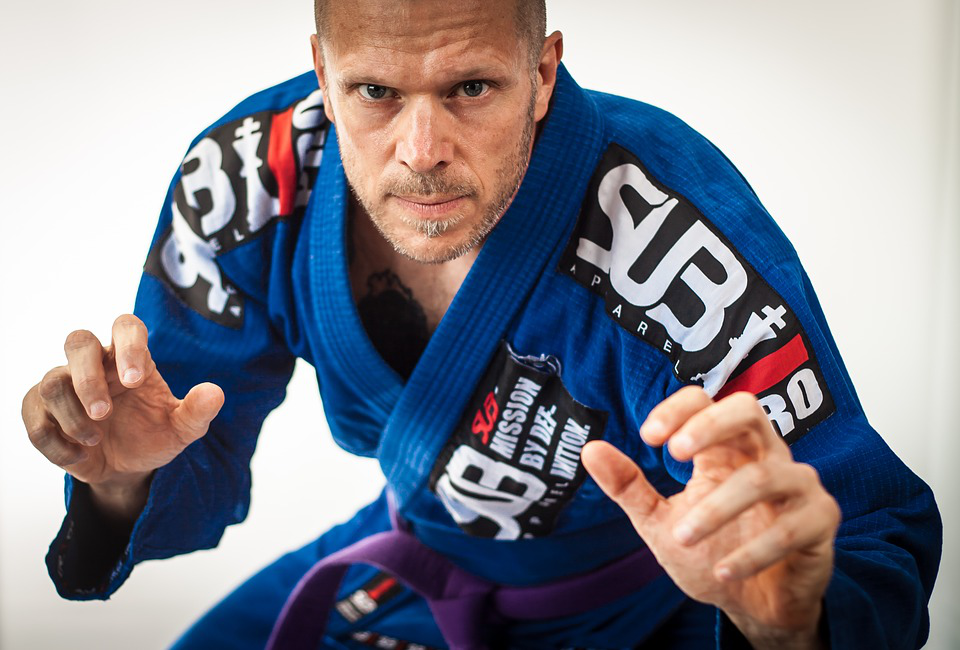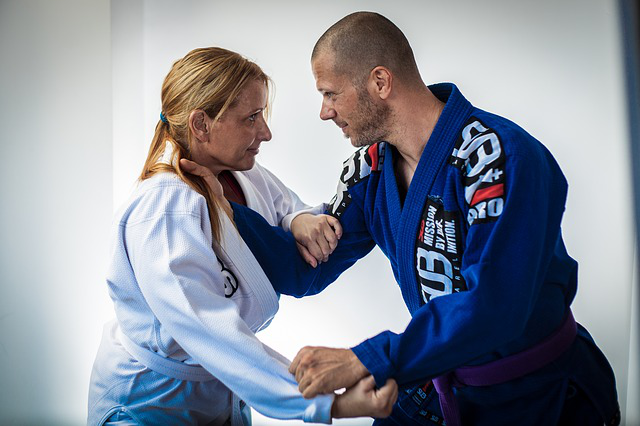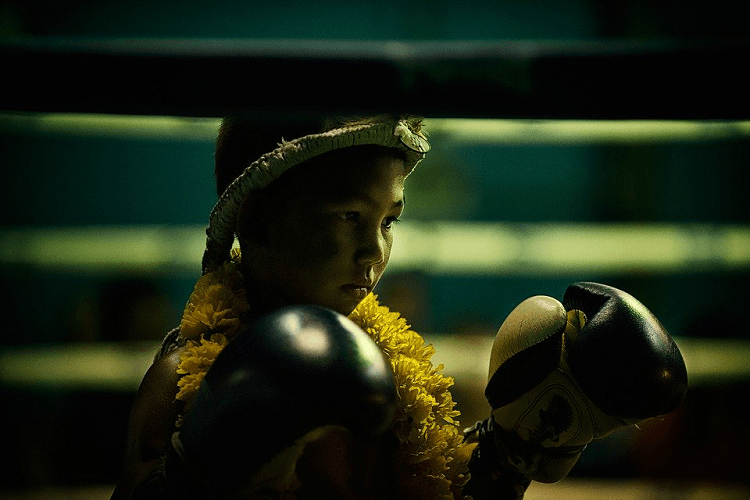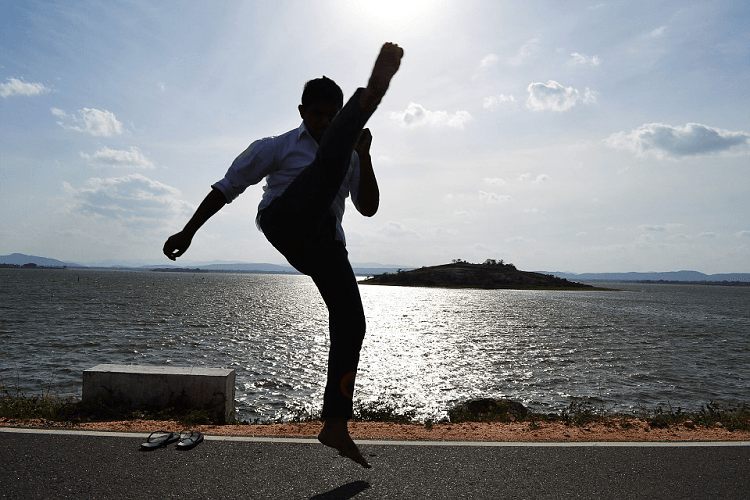Ways of the Warrior Within (1 of 3)
Ways of the Warrior Within
(Part 1 of 3)
“Ways of the Warrior Within” is the first in a series of blogs that will explore the concept of the Warrior in history, what the Warrior-spirit means to us in modern-day society, and how every-day individuals demonstrate this concept when battling adversity. Future blogs will apply this concept to demonstrations of the Warrior-Spirit in action.
The Warrior as History and Myth
Throughout recorded history, the Warrior has served as inspiration to anyone who faces conflict, or challenges fear and adversity. When we look to the Warrior in history, we hear tales of King Minos battling his Minotaur, Achilles fighting for glory and the city of Troy, and the Spartan 300 making a defiant stand against Xerxes at the battle of the Thermopylae. We read about the fallen Warriors of the Viking sagas, waking each day to battle and feast in the mythic halls of Valhalla, and we study the moral dilemma of Arjuna, the Warrior-prince in the Bhagavad Gita of ancient India. We also find the Warrior in the Biblical tale of a young King David battling the giant Goliath, defeating him with a single river stone and a simple sling. In each of these classic tales, we find a common, underlying theme of the hero-warrior challenging fear and overcoming great adversity.
Professor and noted author, Joseph Campbell studied the myth of the hero-warrior throughout history, and introduced us to his concepts in The Hero with a Thousand Faces, and The Magic of Myth. Through his comparative studies, Campbell developed a concept that all mythic narratives are variations on a common theme, or story that is embedded in our basic psyche. The Warrior (and sometimes, the reluctant Warrior) has been important in all cultures, and Campbell noted many thematic consistencies in tales regarding hero-Warriors recounted throughout humankind’s long history. We also see these recurrent themes in modern mythic tales, including J.R.R Tolkien’s Lord of the Rings, and George Lucas’s Star Wars. Both of these modern myths present us with a “reluctant” and seemingly “incapable” hero that must overcome fear and great adversity, in order to defeat an overwhelming evil force and save a mythical world. During the journey, the hero-warrior learns to step out of the comfort-zone, become a leader, and willingly embrace conflict against a much more powerful adversary.
The term “conflict”, however, does not necessarily represent military might or the glorious actions of warrior-kings in battle against evil dark lords. You can face conflict and adversity in any facet of your life, and daily I find situations where I must fight (and overcome) my fear, even though no dragons or evil lords are threatening. So what does the term “Warrior Spirit” really mean, particularly when the concept of “proving my mettle” to society means something very different in a modern age where kings no longer battle mighty dragons with shield and sword?
As we study this question, the focus should not be on the valiant actions of a soldier on the battlefield - this is only one small facet of the Warrior. In Japanese culture, Bushido is a code that represents the Way of the Warrior, and reinforces character, mindset and consequent action(s). This Warrior code is applicable to anyone, in any walk of life, whether soldier or peasant, and the actions of the Warrior may (or may not) involve physical conflict.
A Warrior Does Not Necessarily Mean a Fighter or Soldier
A Warrior is not always a soldier. A Warrior can be anyone engaged in struggle or conflict, whether or not that conflict is physical. A Warrior can be a child or an adult, a patient or a nurse, a soldier or a police officer, a teacher or a student, the leader of a mighty nation, or an employee at a fast-food restaurant. A person can walk any path in life with the heart and mind of a Warrior, if they possess inner strength, and the ability to resolve conflict, or efficiently out-maneuver an adversary (physically, cognitively, financially, legally, socially). Each of us possess these basic principles to varying capacities, and our abilities are largely dependent upon cultivation of knowledge through education, training, and practical experiences.
A Warrior may not be the most boisterous voice in the room, or appear as the most capable person to achieve the task. Bravery comes in many forms, and a Warrior mentality is not principled on the appearance of strength, or anger in the lion’s roar. Attitude is the decisive factor for the Warrior - not strength of arm. Positive attitude and unrelenting resolve to achieve the task and avoid failure represents the true agenda for the Warrior. Leonidas was certainly a brave Spartan Warrior who fearlessly embraced death in battle, but what of Mahatma Gandhi who nurtured independence, and inspired civil rights around the world? Like Leonidas, Gandhi also died as a result of his commitment to achieving his goals, but Gandhi never carried a sword or rifle, and always advocated peace (not violence).
So the real question is whether you want to embrace success in life, or nurture failure. It is easy to take a back seat, and be happy with the crumbs from the table as you let the world pass you by - but a brave Warrior will fervently seek opportunities to jump into the fray to face any meaningful challenge with both an assertive, and positive attitude.
A Warrior Faces Conflict
To run and flee, or to engage in mortal combat are not the sorts of conflict most people contend with each day. Conflict can arise when facing any unwanted situation that tests your mettle, and resists your advances on the field - in summary, conflict can be anything that stands between you and your goals. Thus, conflict can arise due to interactions with others, but it can also arise due to any situation or circumstance in your life, such as tenuous relationships, situations on the job, or even a crises of health and security.
Awareness of self, others, and the environment of the conflict (the conflict battlefield) is the key to knowing your tac when facing the situation. Assessing your goals is generally the first step in choosing your course of action as a Warrior. By using your knowledge and understanding of yourself and your adversary (patterns of behaviour, posturing, objectives, logic and reasoning), you can gauge whether or not you value your position enough to engage in the conflict, and whether or not you have the resources and grit to survive, be triumphant, and thrive. So you must first ask yourself - is the goal worth the effort of the conflict? If so, what are the consequences of loss, and are these consequences worth the fight?
A Warrior Challenges Adversity
Oppression, exclusion, poverty, depression, illness, injury … each of these can be debilitating, and in certain situations, life-threatening. These situations and or conditions break the will of many people around the world on a day-to-day basis. Despite the many people that are often victims of circumstance or condition, there are thousands of people that rise up, often making huge sacrifices in order to address their challenges effectively. What is the common thread amongst these successful warriors who have experienced great adversity and prevailed? This characteristic can be summed up in a simple phrase - True Grit.
If you have ever read the book True Grit or have seen the movies, the character of Rooster Cogburn is certainly larger than life with his daring bravado and cavalier attitude (particularly as portrayed by John Wayne), but many overlook the fact that the main character of the story is actually Mattie Ross, the young 14-year old hero seeking justice for her murdered father. The story is told through her eyes, and at every turn in the hero’s journey, she is berated by others who point out how incapable she is as a teen-age girl in a “man’s world”. Mattie’s strength as a Warrior is to turn a deaf ear to these insults and taunts as she focuses solely on her goal of justice for her murdered father. She repeatedly demonstrates her shrewdness in a “man’s world”, and bravely faces incredible adversity - both in the form of ridicule from those she has employed to help her, and in the form of violence inflicted upon her by the villains of the story. Mattie assesses her goals, and values her position as worth the dangers and heartache of conflict. Thus, empowered by her resolve, Mattie faces her adversaries without fear of repercussions, and bravely pushes forward through the dangers of conflict, in order to achieve her honorable goal of justice.
Although Mattie certainly has her shortcomings and flaws in the story, I think we could all learn something from the character of Mattie Ross.
A Warrior’s Fight is often “Fear of Failure” and “Fear of the Unknown”
Your first kiss, public speaking, or simply trying to accomplish something you have never done before all involve risk, and the risk is knowing that there is the possibility that something will go wrong. It is wise to proceed with awareness and caution; however, it is unhealthy and toxic to make endless mental lists of the negative possibilities or small details that might derail your performance. Many times, people fear trying and failing in front of others, more than they fear the actual consequences of the loss, but this sort of thinking diminishes your potential.
For example, have you ever been scared to give a public presentation, or speak in front of a large class or an audience? Your mouth dries, your voice cracks, and your knees begin to buckle and knock together - but nobody is going to physically harm you in this example, so what is it you are actually worried about? You worry about failing and being ridiculed by others who might laugh at your failure, and this can send you spiraling down a losing path every time. A Warrior attempts to expand his/her capacity to perform by demonstrating fearlessness in work and play in all circumstances. Always remember, however, that fearlessness does not mean recklessness (as discussed above, awareness and assessment of the goal and consequences of failure is always important).
Visualization is a great tool that can help you to overcome “fear of the unknown”, by repeatedly exposing you to a mental image of the challenge or adversity (see discussion of Visualization in our previous blog, Using Self-Awareness to Keep Your Adrenaline in Check). This repeated exposure can help you to address (and suppress) your natural fears, and also serve as a supplement to actual experience. As an example, a form of visualization was used by the ancient Samurai of Japan, who would sit and meditate each day on the many horrible things that could fell them in battle. Through this continued meditation, the Samurai learned to suppress their fear as they charged into the fray of sword and spear. Similarly, Visualization can help you to refine almost any performance through a repeated mental “rehearsal” in your mind, where you are allowed to mentally practice and correct your actions, without fear of ridicule from others. Think of it as a free “virtual” practice-session, with no harm or foul.
The nature of the Warrior is to challenge the fears within, and the adversities without - to try and then fail leaves no blemish on the character of a Warrior. Learn to set fear aside and focus on your goal, and what it takes to achieve your goal, and always remember - there is no harm in failing at an honest attempt, but as discussed below, there may be great harm in never trying.
There are Things in this World that the Hero Fears More than Death
The zombie apocalypse, Armageddon, and nuclear war are meant to stir our very primal fear of death. Fear is part of the human condition. Death is the paradox of our existence, yet it can also help us embrace each day. Think about the “Bucket List” and living life to the fullest while you are still on this earth in an upright position. This perspective is also aligned with the concept of continuous self-improvement as you journey down the path.
Humble heroes returning from the battlefield sometimes try to explain their valiant actions when pressed for details. Some may not remember exactly what led to their acts of bravery, and others might express heroism as a by-product of sheer anger and rage. However, I have also heard heroes state that they are not brave at all and fear death as much as any soldier, but there are things on the battlefield that they fear worse than death. This might be the fear of capture, the fear of civilian casualties, or the fear of losing their friends on the battlefield. These hero-warriors have weighed and measured their goals and the consequences of failure, but they are willing to sacrifice everything to avoid suffering a fate that for the hero, may be worse than death.
A more approachable example of this might be a mother who fends-off a violent attacker, out of fear that harm will come to her young child, or a husband who faces an armed assailant out of fear that his wife will be assaulted. In these examples, the valiant Warrior rises to the challenge not as an act of bravery or heroism, but out of a desire (sometimes desperation) to not suffer a consequence that the Warrior deems worse than death itself. For an excellent true-story example of a frightened mother who rose to the challenge as a hero-Warrior, see the cable television episode titled Revenge on Wheels, from the ID Channel documentary series Over My Dead Body, featuring Terminator actor Linda Hamilton as host. In this true account, Dorothy Baker endured what can best be described as “mortal combat” against an armed assailant within the confines of her vehicle as it barreled down the highway. In the documentary, Ms. Baker shows us all what it means to be a hero-warrior, when the lives of her children are in jeopardy during a car-jacking.
There are things in this world that people fear worse than death - it is this fear that often gives birth to heroes. Not all situations a Warrior will face involve life or death, but this same concept can help you as a Warrior to stand strong and fight your fears in whatever conflict you face, even if that conflict is not life-threatening. Yes, you may have a fear of failing at your attempt, but ask yourself what consequence you might suffer, if you never try? Do I want to live the rest of my life, suffering those consequences?
A Warrior Possesses Selfless Ego and Compassion for Others
When you follow the rules of Awareness and know yourself and those around you, another important consideration is to acknowledge the gifts that everyone brings to the table. This can be accomplished in a variety of scenarios, but the most important aspect is to first step away from your pride and ego, in order to embrace the contributions of others - pride is a great virtue, but it can also be a heinous flaw.
For example, you may notice another person wanting to contribute to a task that you normally control at work or school. This is a great time to take stock in the initiative and talent of the other person who is willing to help. Stepping back and being a guide on the side will assist in acknowledging and cultivating their potential. The Warrior nurtures those in close proximity through the behaviours toward, and treatment of, others. In this way, future Warriors are cultivated - but equally important, you will become stronger as a Warrior because the contributions of others can aid in the successful achievement of your goals (few of us ever “go it alone” in times of crises, and help can be a critical component to success).
A Warrior also demonstrates compassion in the advent of failure by others in the circle or community. If the Warrior possesses superior knowledge, it would be extremely callus for the Warrior to stand by idly while others falter, when a simple word of guidance might have helped. Only a coward tries to go it alone while others fall on the field of battle. A Warrior learns to embrace the contributions of others, both to nurture and teach, and also to lend strength and validity to the overall game-plan. Teaching others to be strong can actually strengthen your cause.
Reminders for the Warrior Within
Calmness and serenity are advantageous virtues. Calmness in the face of opposition, and serenity during the greatest of crises can mean the difference between success and failure, or life and death - panic kills, and fear decimates. When faced with a crises, a Warrior does not panic, but will march into the face of adversity, striving forward incessantly, until there is no longer adversity present.
In reaching for lofty goals, consider living your life while striving for success, rather than nurturing failure - make optimism contagious, and use optimism as a daily mantra, even when times look dark. Learn to be aware of yourself and others within your environment, and take the time to assess your goals and weigh the risks of success or failure. It is OK to be afraid of adversity, conflict, or challenge, but strive not to “fear the fear” and allow this to paralyze you and keep you from your goals. Try to envision that everyone and everything you come into contact with are of the highest quality, even, if other people don’t share your beliefs. Try to maintain positive, respectful, and appreciative relationships with people inside and outside your circle of influence, so that they are buoyed up by your presence. These relationships may, in turn, lift you to new heights and aid you in the journey towards your goals. Focus each day on fine-tuning and aligning your actions with your goals… It is through these daily practices that goals become reality in all walks of life.
This is the first in a three-blog series titled: “Ways of the Warrior Within”. In consecutive blogs, we will examine the Warrior throughout history, including the Tribal Warrior as rank and social status, the Warrior as a Soldier at various points in history, and the evolution of the Warrior as a capable adversary in the modern business world.
